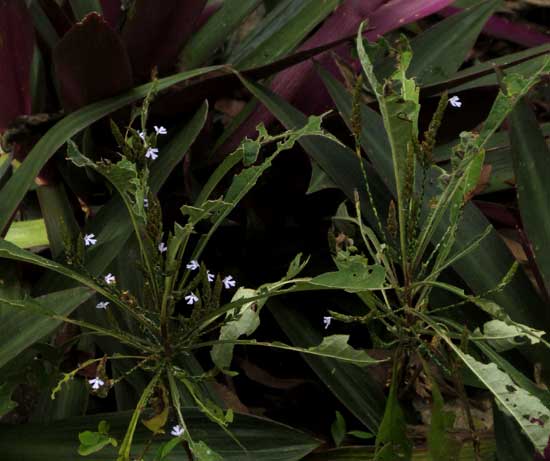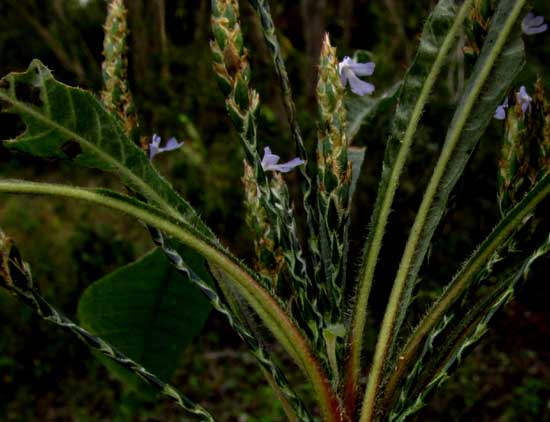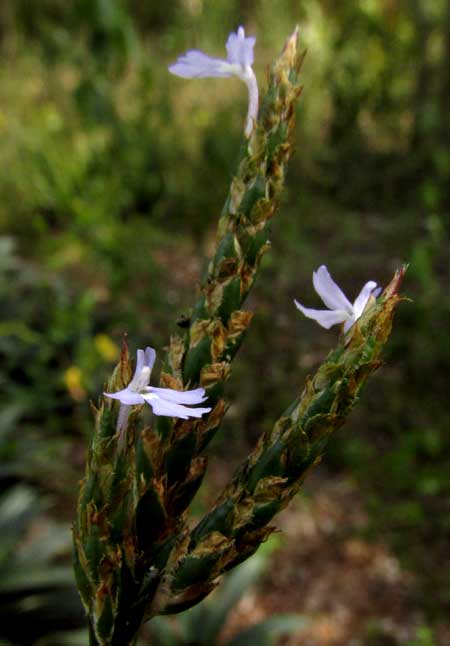Excerpts from Jim Conrad's
Naturalist Newsletter
from the January 28, 2018 Newsletter issued from Rancho Regenesis in the woods ±4kms west of Ek Balam Ruins; elevation ~40m (~130 ft), N20.876°, W88.170°; north-central Yucatán, MÉXICO
PURPLE SCALYSTEM
Along the footpath to the hut, a very bug-eaten, raggedy looking, foot-tall herb caught my attention because its tiny purplish flowers seemed to glow in the morning dimness as if they possessed incandescence. Below, you can see the effect:

The flowers were never open at dawn, but by mid-morning they were fully open. The plant displayed an unusual form of growth, better seen below, from farther away:

Notice how leaves clusters atop short stems. They're like rosettes raised from the ground. The leaves' margins, instead of ending at the top of petioles, continued on down the petioles, forming narrow, green wings almost to the petioles' bases, as shown below:

That picture also shows how the flowers grew in thick spikes, the spikes themselves often arising two, three or more together. A closer look at the spikes and their dainty flowers, the corollas' lobes flaring from atop slender, upward-growing tubes, is shown below:

The plant is reminiscent of the Verbena Family, but when you get much closer to the 1/3-inch-long (7mm) flowers, you see features that cast doubt on that family, shown below:

Only two stamens are seen, plus notice that structure curiously projecting from between the two, mostly fused-together top petals, above the corolla's throat. Seeing that, and taking into account the thick, scaly flowering spikes, I remembered that back at Chichén Itzá we've seen those features, though they were produced by a plant whose leaves hugged the ground, forming real rosettes, not elevated ones. We called that the Wheatspike Scalystem, Elytraria bromoides, and our page for it is at www.backyardnature.net/mexnat/scaly.htm
Could we have a second species of Elytraria, one with a stem? It was easy enough to find that a second Elytraria species does indeed occur in the Yucatan, and it's one with a stem, and in fact looks exactly like our footpath plant.
Our footpath plant is ELYTRARIA IMBRICATA, a member of the Acanthus Family, the Acanthaceae, sometimes in English named the Purple Scalystem. It enjoys an English name because not only does it occur throughout most of tropical America, but even as far north as the southwestern US. It's also establishing itself as a weed in various other parts of the world's tropics.
Numerous traditional medicinal uses have been reported for Purple Scalystem. In the Yucatan it's been commonly used to cure the diarrhea.